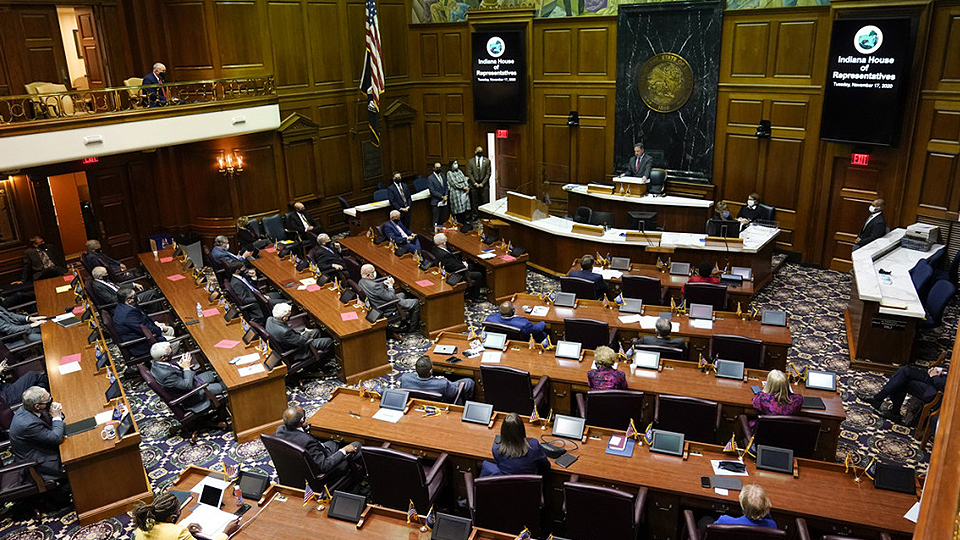More money means more funding decisions for lawmakers
Subscriber Benefit
As a subscriber you can listen to articles at work, in the car, or while you work out. Subscribe Now
Indiana lawmakers have an extra $1.5 billion in cash to work with as they finalize a two-year state budget, but with more money comes the added responsibility of deciding who gets a share of the windfall.
Those decisions will have to come in the next week as the Republican-dominated Indiana General Assembly tries to finish its work for the year by the April 29 deadline and attempts to resolve disagreements over how much money should go to public health, mental health, public education and the state’s school choice voucher program.
Lawmakers know they will have extra cash thanks to economic and revenue forecasts released Wednesday by the Indiana State Budget Agency. Those reports showed the state’s economy is performing better than expected and that state government will bring in $1.5 billion more in revenue over the next two years than was projected in the December forecast.
Legislators were in a similar position two years ago after the April 2021 forecast increased Indiana’s revenue projections by $2.4 billion over the next three years, in large part due to federal stimulus spending and a quicker-than-expected economic rebound from the pandemic recession.
That year, Republicans took the opportunity to nearly double funding levels for K-12 education from what budget negotiators had initially proposed. But, over the objection of Democrats and public education advocates, they did not dedicate more funding toward pre-kindergarten programs and opted to dramatically expand income eligibility for the state’s private school voucher program.
Income eligibility for the program is currently set at about $145,000 a year for a family of four, but House Republicans want to expand the program by raising the cap to $220,000. Under their budget proposal, roughly a third of the $2 billion in new K-12 education funds would be earmarked for the program’s expansion.
The Senate budget does not expand the program, instead allowing charter schools to capture a portion of property tax revenue.
It’s unclear which proposal will win out, or if both approaches could make it in the final budget, given the state’s rosy financial picture.
“I’m always going to make the argument that the money is there to fund students, not systems,” said House Speaker Todd Huston, R-Fishers, a fierce advocate for charter schools. “We just think that’s the right public policy.”
Senate Appropriations Chair Ryan Mishler, R-Mishawaka, caused more than a few jaws to drop earlier this year when he publicly rebuked the state’s school voucher program after he objected to a situation at a private Catholic school in northern Indiana where his son is a senior.
But Mishler declined to say whether he would take a hardline stance on keeping eligibility levels where they are.
“That’s always an ongoing discussion with the House and Senate and has been every year,” Mishler said. “We’ll sit down, and we’ll talk our way through that.”
House and Senate Republicans also differ on how to provide free textbooks to K-12 students, one of Gov. Eric Holcomb’s legislative priorities. The Senate budget would have the state bear the $160 million cost, while the House proposal would require schools to take on that financial burden.
Indiana ranks as one of the top 10 states in the country for high rates of obesity, smoking, infant mortality and maternal mortality, according to previous studies.
Both the House and Senate tentatively settled on a $225 million allocation for the governor’s public health commission over the next two fiscal years, most of which would go toward county health departments. But the $1.5 billion windfall may put added pressure on lawmakers to raise that number closer to the commission’s $240 million annual funding recommendation.
The Senate budget, which has been more bullish about paying down debt obligations, includes a $1 billion payment toward the pre-1996 teacher retirement fund, while the House proposal allocates $250 million.
